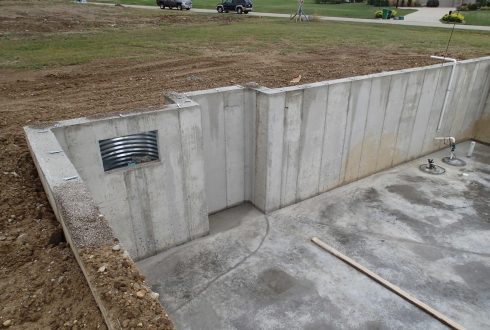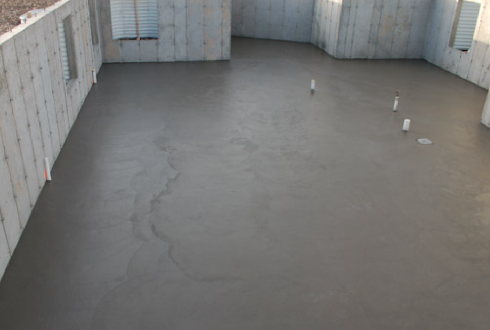Basements
Basements
What to Consider When Planning a Basement
Concrete basements are popular features in many residential and commercial buildings, offering additional living or storage space and providing various benefits.
Definition and Purpose
• A concrete basement is a below-ground level of a building that is typically constructed using concrete walls, floors, and footings.
• Basements serve multiple purposes, including storage, recreational areas, utility rooms, and living space extensions.
Advantages of Concrete Basements
• Added Space: basements offer additional usable space for various purposes, including living areas, recreational rooms, home theaters, and storage.
• Energy Efficiency: properly insulated basements can help improve energy efficiency by reducing heat loss and minimizing heating and cooling costs.
• Protection from Natural Disasters: basements can serve as shelters during severe weather events such as tornadoes or hurricanes, providing safety for occupants.
• Increased Property Value: homes with finished basements often have higher resale values and attract more potential buyers.
Maintenance and Care
• Regular Inspections: periodic inspections for signs of water leakage, cracks, mold, and structural issues.
• Dehumidification: using dehumidifiers to control moisture levels and prevent mold and mildew growth.
• Foundation Repair: addressing any cracks or damage to the basement walls or floor promptly to prevent structural problems.
• Gutter and Drainage Maintenance: keeping gutters clean and ensuring proper drainage away from the foundation to prevent water accumulation around the basement.
Construction Process
• Excavation: the process of digging out the area where the basement will be located, often requires heavy machinery.
• Foundation Walls: concrete walls are poured or constructed to form the perimeter of the basement, providing structural support and enclosure.
• Floor Slab: a concrete slab is poured to create the basement floor, providing a level surface for various activities.
• Waterproofing: applying waterproofing materials and membranes to prevent moisture penetration and water damage.
• Insulation: Installing insulation materials to regulate temperature and moisture levels within the basement.
Basement Finishing
• Interior Design: decorating and furnishing the basement to create functional and aesthetically pleasing living or recreational spaces.
• Electrical and Plumbing Installation: adding electrical wiring, outlets, lighting fixtures, and plumbing connections for sinks, toilets, and laundry facilities.
• Ventilation and Air Quality: installing ventilation systems and air purifiers to maintain good indoor air quality and prevent moisture buildup.
• Permits and Regulations: ensuring compliance with local building codes and obtaining necessary permits for basement finishing and remodeling projects.


